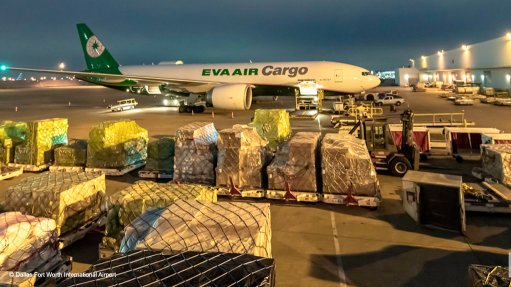
Photo by: Dallas Fort Worth International Airport
The International Air Transport Association (IATA), the global representative body for the airline industry, has reported that the decline in air cargo demand continued its deceleration in June. That month saw the smallest year-on-year (y-o-y) contraction since February 2022. Total global y-o-y air cargo demand in June was down 3.4%, with international air cargo demand falling by 3.7%. In comparison to demand in June 2019, before the Covid-19 pandemic hit, June 2023 demand was down by only 2.4%
For the first semester of this year, total demand was down 8.1%, y-o-y. The fall in international demand was 8.7%.
Global international trade had decreased by 2.4% in May, IATA noted. This was because of “challenging” economic conditions and consequent cooling demand. In June, the manufacturing output Purchasing Managers Index (PMI) was 49.2, and the export orders PMI was 47.1. With the key PMI mark being 50.0, these numbers indicated a decline in both manufacturing production and exports, worldwide.
Air cargo capacity rose 9.7% in June, y-o-y. This represented a deceleration in comparison to the double-digit y-o-y capacity increase which happened in March, April and May. This deceleration was, IATA explained, the result of strategic adjustments made by airlines because the demand environment was weaker. June 2023 capacity was 3.7% above June 2019 capacity. During the first half of this year, total capacity increased by 9.9%, y-o-y.
“We remain hopeful that the difficult trading conditions for air cargo will moderate as inflation eases in major economies,” stated IATA director-general Willie Walsh. “This, in turn, could encourage the central banks to loosen the money supply, which could stimulate greater economic activity.”
Only two of IATA’s six regions, Latin America and the Middle East, saw a y-o-y increase in cargo demand in June. Demand in Latin America jumped 7.3%, by far the best performance of any region. This was also a better performance than in May, when the region had recorded a y-o-y increase of 3.8%. For the first half of this year, demand was up 0.9%, y-o-y. In the Middle East, June saw a y-o-y rise of 0.5%, but this was still a significant improvement over the equivalent figure for May, which had been a fall of 2.9%. For the first semester of this year, demand declined by 5.6%, y-o-y.
The two regions which recorded the lowest y-o-y declines (2.8% in both cases) in June were Africa and Europe. For Africa, this was a worse performance than in May, which had seen a y-o-y decrease of 1.9%. For Europe, the June figure was a notable improvement over the equivalent May figure, which had been a fall of 6.6%. For the first half of this year, air cargo demand in Africa was down by 4.4%, and for Europe it dropped by 10.2%.
Next came the Asia-Pacific, with a y-o-y decline of 3.6% in June; this was a deterioration in comparison to the equivalent figure for May, which had been a decrease of 2.5%. For this year’s first semester, demand fell by 6.5%, y-o-y.
North America, for the fourth month in a row, was, in June, IATA’s worst-performing region, with a y-o-y drop of 6.5%. However, this was an improvement over the May y-o-y fall of 8.6%. For the first half of the year, demand was down 10.5%, y-o-y.